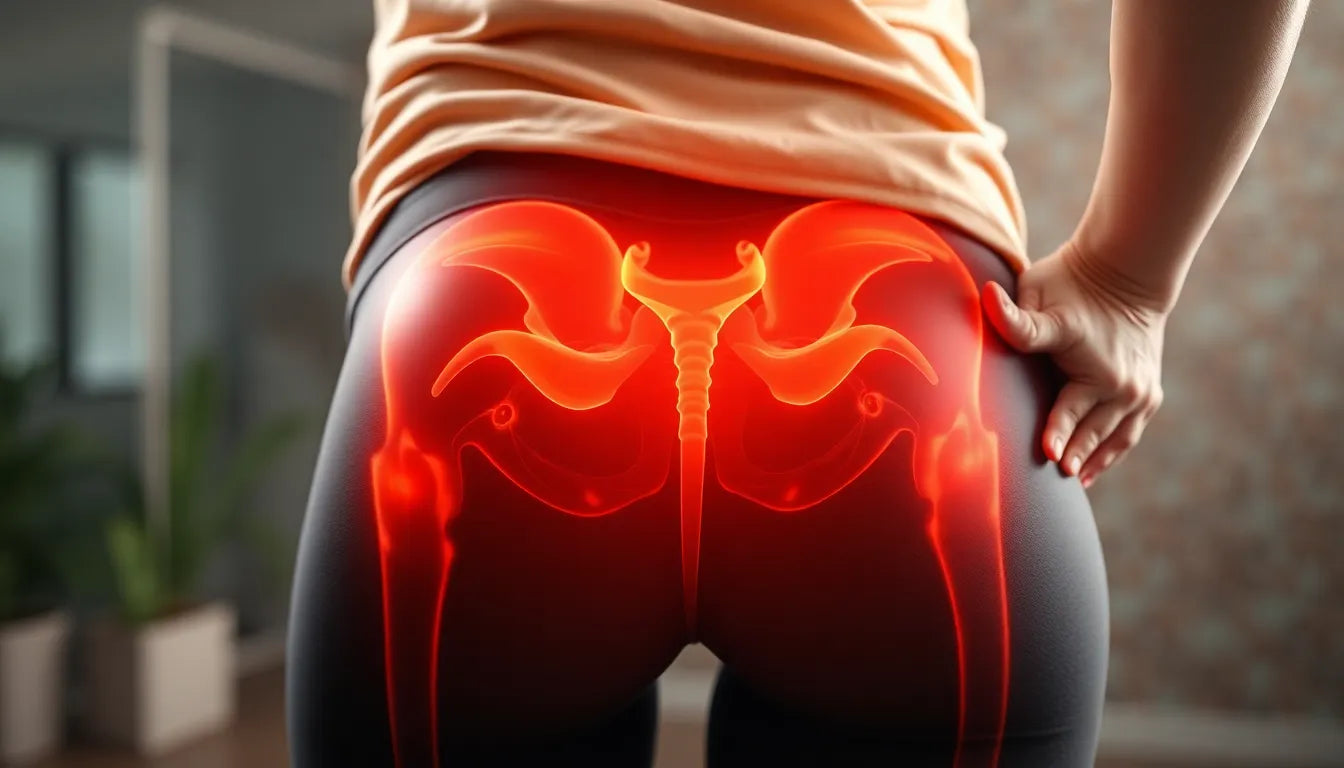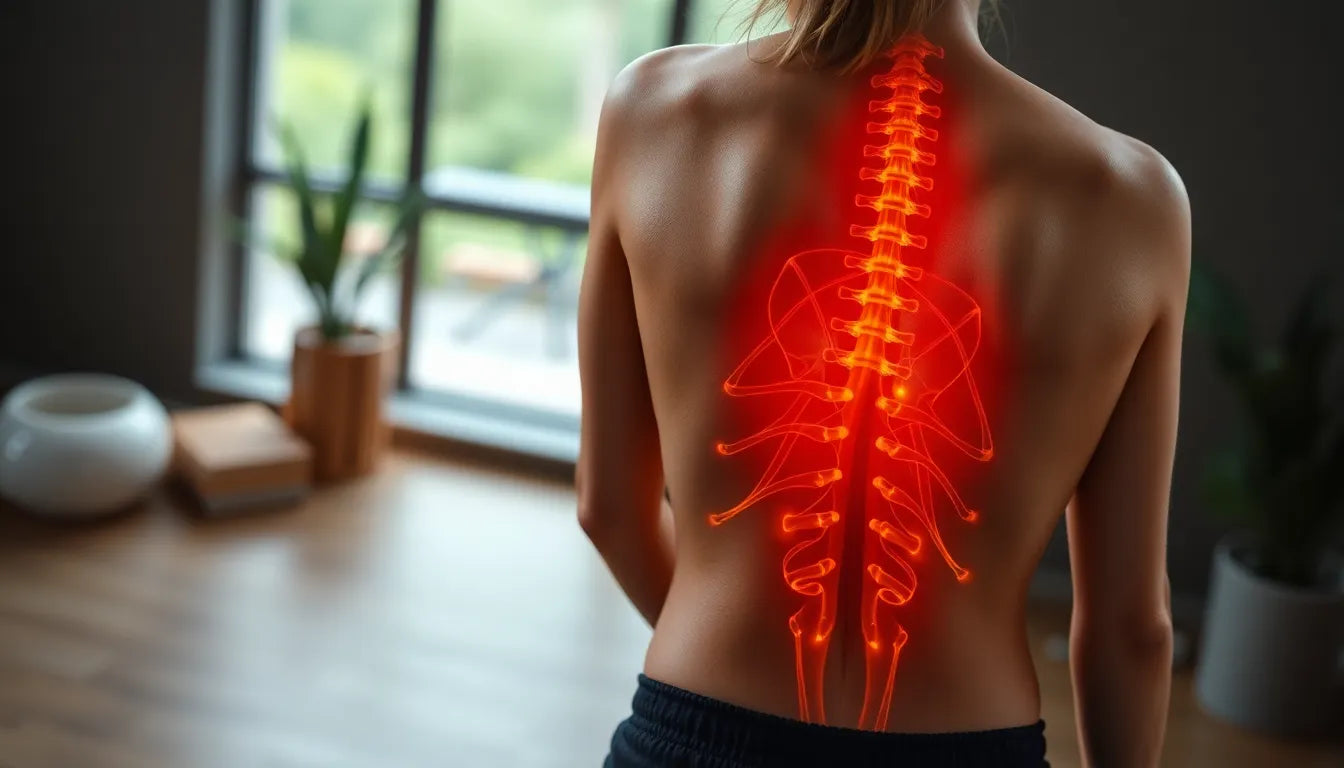In today's fast-paced world, mid-back pain has become a common complaint among individuals of all ages. This discomfort, which can range from a mild ache to severe, debilitating pain, affects millions worldwide, impacting daily activities and overall quality of life. Understanding the causes of mid-back pain is crucial for effective management and prevention, as it can stem from various factors, some of which are easily overlooked.
Why identifying causes of mid-back pain matters
Identifying the root causes of mid-back pain is essential for developing targeted treatment strategies and preventing future episodes. The causes of mid-back pain are diverse, encompassing lifestyle habits, structural issues, and even serious medical conditions. By pinpointing the specific triggers, individuals can take proactive steps to alleviate pain and improve their overall health.
Mid-back pain can arise from something as simple as poor posture or muscle strain due to overuse. These common causes are often linked to our modern lifestyles, which involve prolonged sitting and repetitive motions. However, mid-back pain can also signal more serious underlying conditions, such as spinal disorders, osteoporosis, or even systemic illnesses. Recognizing the signs and understanding the potential causes are vital for seeking appropriate medical attention and avoiding complications.

Women's Posture Shirt™ - Black
Styrker din holdning og kan lindre smerter samt spændinger i ryggen.
In the following sections, we will delve deeper into the various causes of mid-back pain, exploring both common and less obvious triggers. From muscle strain and poor posture to more complex structural and systemic causes, gaining insight into these factors will empower you to take control of your health and reduce the risk of chronic pain. Stay tuned as we uncover the hidden triggers of mid-back pain and provide practical advice for prevention and management.
common causes of mid back pain
Mid-back pain is often the result of muscle strain and overuse, particularly in today's sedentary lifestyles. Engaging in repetitive motions or heavy lifting without proper form can lead to strained muscles, which is one of the most common causes of mid-back discomfort. According to recent studies, muscle-related back pain affects a significant portion of the population, highlighting the need for awareness and preventive measures.
Poor posture is another prevalent factor contributing to mid-back pain. With the increase in desk jobs and screen time, many individuals unknowingly adopt improper ergonomic positions, leading to misalignment of the spine and increased muscle tension. Over time, this can result in persistent mid-back pain, emphasizing the importance of maintaining good posture and ergonomic practices.
structural causes of mid back pain
Beyond muscular issues, structural problems within the spine can also lead to mid-back pain. Conditions such as herniated discs, spinal stenosis, and various forms of arthritis, including osteoarthritis and rheumatoid arthritis, can significantly impact spinal health. These disorders alter the spine's structure and function, often causing chronic pain and discomfort in the mid-back region.
Osteoporosis, a condition characterized by decreased bone density, is another structural cause of mid-back pain, particularly in older adults. This condition increases the risk of vertebral fractures, which can be both painful and debilitating. Understanding these structural issues is crucial for seeking appropriate medical intervention and managing pain effectively.
systemic and referred pain causes
In some cases, mid-back pain may be a symptom of systemic illnesses or referred pain from internal organs. Serious conditions such as heart attacks, aortic aneurysms, and certain cancers can manifest as pain in the mid-back, making it essential to recognize these symptoms for timely medical intervention. Additionally, issues with organs like the kidneys, gallbladder, and pancreas can cause referred pain, which may be misinterpreted as originating from the spine.
Diagnosing these conditions often involves a comprehensive medical evaluation to differentiate between spinal issues and referred pain. Awareness of these potential causes is critical, as they may require urgent medical attention to prevent serious health complications.
understanding the complex nature of mid back pain
Mid-back pain is a multifaceted issue with numerous potential causes, ranging from common lifestyle factors to serious medical conditions. By understanding the underlying triggers, individuals can take proactive steps to manage their pain and improve their overall well-being. Recognizing the signs of muscle strain, poor posture, and structural issues is key to preventing chronic pain and maintaining a healthy spine.
Furthermore, being aware of systemic and referred pain causes can aid in identifying when mid-back pain may signal a more serious health concern. In the next section, we will explore additional causes of mid-back pain, including chronic pain conditions and trauma, as well as offer practical advice for prevention and self-care. Stay informed and take control of your health to reduce the impact of mid-back pain on your life.
Exploring additional causes of mid back pain
Beyond the commonly discussed causes, mid-back pain can also be attributed to chronic conditions such as fibromyalgia and myofascial pain syndrome. These disorders are characterized by widespread pain and tenderness in the muscles, which can lead to persistent discomfort in the mid-back region. Individuals with fibromyalgia often experience fatigue and sleep disturbances, further complicating pain management. Myofascial pain syndrome, on the other hand, involves trigger points in the muscles that can cause referred pain throughout the back. Effective management of these conditions typically involves a combination of medication, physical therapy, and stress-reduction techniques.
Trauma and injury are significant contributors to mid-back pain, often resulting from accidents or sudden impacts. Whiplash from car accidents or falls can lead to acute or chronic mid-back pain. Such injuries may damage the soft tissues, bones, or nerves in the spine, requiring comprehensive medical evaluation and treatment. Recovery from trauma may involve rest, physical therapy, and in some cases, surgical intervention to restore function and alleviate pain.
Practical advice and self-care measures
Preventing mid-back pain involves adopting healthy lifestyle habits and making ergonomic adjustments in daily activities. Maintaining good posture is crucial, especially for those who spend long hours sitting. Ergonomic chairs and desks can help ensure proper spinal alignment, reducing the risk of strain. Regular exercise, including strengthening and stretching exercises, can improve muscle tone and flexibility, supporting spinal health.
Simple home remedies can also provide relief for mild mid-back pain. Applying heat or cold packs to the affected area can reduce inflammation and soothe sore muscles. Gentle stretching exercises, such as yoga or Pilates, can enhance flexibility and relieve tension in the mid-back. Additionally, practicing relaxation techniques like deep breathing or meditation can help manage stress, which is often linked to chronic pain.

Men's Posture Shirt™ - Black
Forbedrer din holdning og kan afhjælpe smerter og spændinger i ryggen.
Frequently Asked Questions
What are the red flag symptoms that indicate a serious condition?
Red flag symptoms that may indicate a serious condition include chest pain, numbness or tingling in the limbs, loss of bladder or bowel control, fever, and unexplained weight loss. If you experience any of these symptoms along with mid-back pain, it is crucial to seek medical attention immediately.
When should I seek medical attention for mid-back pain?
You should consult a healthcare professional if your mid-back pain is severe, persistent, or accompanied by red flag symptoms. Additionally, if the pain does not improve with home remedies or interferes with your daily activities, a medical evaluation is recommended to determine the underlying cause and appropriate treatment.
Can lifestyle changes really help with mid-back pain?
Yes, lifestyle changes can significantly impact the management and prevention of mid-back pain. Improving posture, incorporating regular exercise, and using ergonomic aids can help alleviate pain and reduce the risk of future episodes. These changes can enhance overall spinal health and well-being.
How can I differentiate between muscle strain and a more serious condition?
Muscle strain typically presents as localized pain that worsens with movement or pressure. It often improves with rest and home care. In contrast, a more serious condition may involve additional symptoms like numbness, weakness, or systemic signs such as fever. If in doubt, it is always best to consult a healthcare professional for a proper diagnosis.
Are there specific exercises or stretches that can help prevent mid-back pain?
Certain exercises and stretches can help prevent mid-back pain by strengthening and increasing flexibility in the back muscles. Recommended exercises include thoracic extensions, cat-cow stretches, and seated rows. Always consult with a physical therapist or healthcare provider to ensure exercises are appropriate for your condition.
Källor
- Medical News Today. (2021). "What to know about mid back pain."
- WebMD. (2021). "Why Does My Middle and Upper Back Hurt?"
- StatPearls. (2021). "Back Pain."
- Hightower Clinical. (2021). "Middle Back Pain."
- National Institute of Arthritis and Musculoskeletal and Skin Diseases. (2021). "Back Pain."
- Mayo Clinic. (2021). "Back pain - Symptoms and causes."
- UT Southwestern Medical Center. (2021). "5 Signs Your Back Pain Might Be an Emergency."
- Harvard Health Blog. (2016). "Mind your back pain."
- MyHealth.Alberta.ca. (2021). "Back Pain."


















